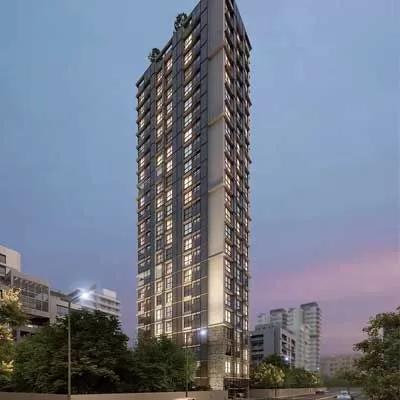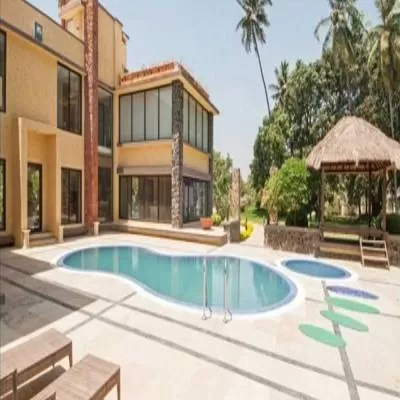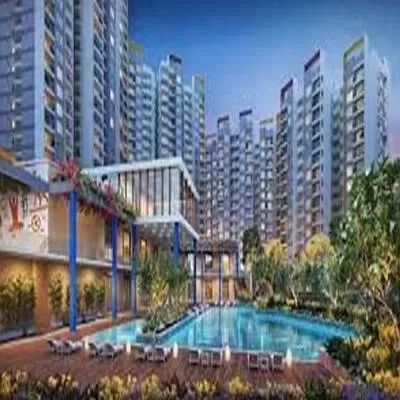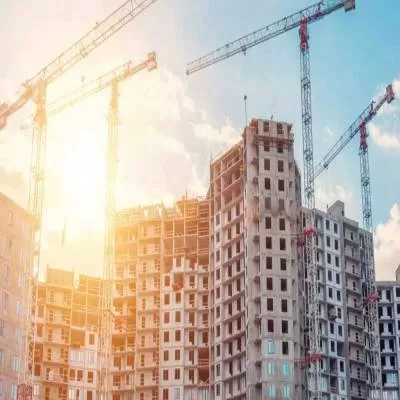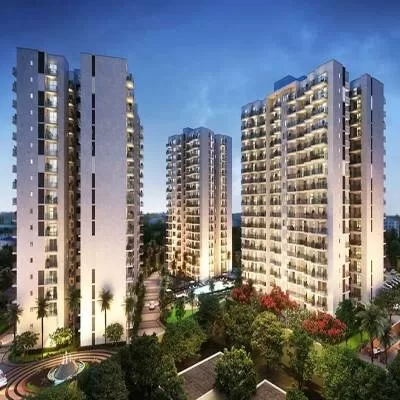- Home
- Real Estate
- Infrastructure pushing investment and growth in the suburban markets of Pune
Infrastructure pushing investment and growth in the suburban markets of Pune
Just like any industry, real estate is also cyclical, sometime the cycles are longer and those who don’t have the mettle or the temerity of being patient with a view on the stability of their investments often panic and sell-off under market driven duress.
Real estate investing is also an art in foreseeing the future, something which may not come naturally to us all. To be able to visualise the development potential of a particular town, city or locality five or ten years hence, is what will lead to value-based investing.
Given the wisdom in real estate investment, more often than not, it is the infrastructure that lays the foundation for growth in the future. Infrastructure is what propels overall development and is a key contributor to the Indian economy.
Referencing the Union Budget 2018-19, infrastructure development has been one of the key focus areas and was allotted Rs. 5.97 lakh crore. Higher emphasis cannot be stressed upon more often that the often stated need for better connectivity.
Even though real estate now falls under the infrastructure sector, the major chunk of the budget is put into road, rail and rural development. There is simply not enough focus on real estate per se but what does help is good social infrastructure and therefore developed and developing infrastructure drives property market values and its appreciation estimates.
Planned infrastructure can lower the cost of living which in turn increases the intent of people buying a home or investing into property. Social Infrastructure development also has a tremendous positive impact on the desire and convenience of living in a specific area.
Today’s discerning home buyer is seeking leisure, convenience along with ease while commuting. Trends like ‘Walk to Work’ or ‘Cycle to Work’ are what several working professionals are looking towards and are even willing to pay a premium for this. The core sections of urban cities provide fewer opportunities these days to own a home due to the exorbitant prices and hence buyers are increasingly looking at properties that are on the fringes of a city. However, given the progressive standards of connectivity, suburban pockets are increasingly becoming the more sought after areas to own a home. These new suburbs provide not just the ease of commute but also a dependable social infrastructure to live to inhabit. The benefits of being able to develop a particular locality in a planned and thought-out manner helps create a conjoined working and living environment, where both residential, commercial and social infrastructure are all in close proximity.
Pune as a geography has enormous potential to flourish spatially from all sides; it is constantly absorbing the nearby villages and expanding rapidly. The growing IT parks and commercial hubs in the suburbs have created a demand from buyers and consequently resulting in better social infrastructure. Included in the ‘100 Smart Cities’ list, Pune is quickly gaining higher prominence on the back of the growing infrastructure. Some major infrastructure projects, including the Mumbai-Pune Expressway and Pune-Bangalore Expressway are other key factors helping the city become a preferred location of residential development. As per the airport’s growth rate Pune had 8.16 million passengers in 2017-18. Demand for Pune as an internationally sought after business destination is on the rise owing to sectors like trade and commerce, education, IT, tourism and agriculture are pushing the demand. As the city’s central locations have long been congested and remain unaffordable and untidy, the demand for expansion in the nearby vicinity is really leading the market and will continue to have a steady increase.
The city suburbs have been flourishing in the recent years, primarily due to the better infrastructure that has made connectivity easier. Suburban markets like Kharadi, Wagholi, Hingewadi, Shirgaon, etc. which were considered fringe markets just a decade ago have now been seamlessly integrated into the main geography. With more IT parks and commercial hubs coming up in in regions like Kharadi, this market is witnessing quite a dramatic surge in demand and momentum in the Real Estate space. Kharadi, once a barren land, is now a landscape dotted with established commercial IT hubs, retail brands, educational institutions, health care brands and shopping malls. It has become an integrated and self-contained town with modern commercial buildings, educational institutions, healthcare facilities, restaurants, shopping and of-course every strata of residential accommodation. Realistically, there is nothing Kharadi doesn’t have which you may need for your daily life.
Basic infrastructure gives people access to elementary resources required for living. Physical accessibility is the fundamental to well-being and livelihood; access to healthcare, market, education, work place, resources, etc. Paved transport access will ease and create opportunity for Real Estate, Employment, etc.
Kharadi is very well connected by wide concrete roads that do not allow for frequent rush-hour traffic halts. What stands for Kharadi excessively well as a starting point is the distance to the airport as well as the recently announced major railway terminus in Hadapsar. This is a vital contributing factor to the business population who may be traveling in and out of Pune frequently.
Buyers prefer to stay close to their work or business / commercial locations which have better infrastructure. A well connected locality makes the commute easier and consequently more relaxed. It provides the most credible lever for driving investment in residential markets in these areas and substantiating the growth probabilities in the future. At the end of the day, the well-established maxim of “Location, Location, Location” is what has driven real estate for generations and will continue to drive it in the future.
About the Author:
Tushad Dubash is the Director at Duville Estates.
A lot of people are attempting to do a sort of medium term arbitrage on real estate. However, to borrow from commonsensical and prudent buying wisdom, it is those who are patient and perseverant with their real estate investments, who will reap the benefits of their investment over time. Just like any industry, real estate is also cyclical, sometime the cycles are longer and those who don’t have the mettle or the temerity of being patient with a view on the stability of their investments often panic and sell-off under market driven duress. Real estate investing is also an art in foreseeing the future, something which may not come naturally to us all. To be able to visualise the development potential of a particular town, city or locality five or ten years hence, is what will lead to value-based investing. Given the wisdom in real estate investment, more often than not, it is the infrastructure that lays the foundation for growth in the future. Infrastructure is what propels overall development and is a key contributor to the Indian economy. Referencing the Union Budget 2018-19, infrastructure development has been one of the key focus areas and was allotted Rs. 5.97 lakh crore. Higher emphasis cannot be stressed upon more often that the often stated need for better connectivity. Even though real estate now falls under the infrastructure sector, the major chunk of the budget is put into road, rail and rural development. There is simply not enough focus on real estate per se but what does help is good social infrastructure and therefore developed and developing infrastructure drives property market values and its appreciation estimates. Planned infrastructure can lower the cost of living which in turn increases the intent of people buying a home or investing into property. Social Infrastructure development also has a tremendous positive impact on the desire and convenience of living in a specific area. Today’s discerning home buyer is seeking leisure, convenience along with ease while commuting. Trends like ‘Walk to Work’ or ‘Cycle to Work’ are what several working professionals are looking towards and are even willing to pay a premium for this. The core sections of urban cities provide fewer opportunities these days to own a home due to the exorbitant prices and hence buyers are increasingly looking at properties that are on the fringes of a city. However, given the progressive standards of connectivity, suburban pockets are increasingly becoming the more sought after areas to own a home. These new suburbs provide not just the ease of commute but also a dependable social infrastructure to live to inhabit. The benefits of being able to develop a particular locality in a planned and thought-out manner helps create a conjoined working and living environment, where both residential, commercial and social infrastructure are all in close proximity. Pune as a geography has enormous potential to flourish spatially from all sides; it is constantly absorbing the nearby villages and expanding rapidly. The growing IT parks and commercial hubs in the suburbs have created a demand from buyers and consequently resulting in better social infrastructure. Included in the ‘100 Smart Cities’ list, Pune is quickly gaining higher prominence on the back of the growing infrastructure. Some major infrastructure projects, including the Mumbai-Pune Expressway and Pune-Bangalore Expressway are other key factors helping the city become a preferred location of residential development. As per the airport’s growth rate Pune had 8.16 million passengers in 2017-18. Demand for Pune as an internationally sought after business destination is on the rise owing to sectors like trade and commerce, education, IT, tourism and agriculture are pushing the demand. As the city’s central locations have long been congested and remain unaffordable and untidy, the demand for expansion in the nearby vicinity is really leading the market and will continue to have a steady increase. The city suburbs have been flourishing in the recent years, primarily due to the better infrastructure that has made connectivity easier. Suburban markets like Kharadi, Wagholi, Hingewadi, Shirgaon, etc. which were considered fringe markets just a decade ago have now been seamlessly integrated into the main geography. With more IT parks and commercial hubs coming up in in regions like Kharadi, this market is witnessing quite a dramatic surge in demand and momentum in the Real Estate space. Kharadi, once a barren land, is now a landscape dotted with established commercial IT hubs, retail brands, educational institutions, health care brands and shopping malls. It has become an integrated and self-contained town with modern commercial buildings, educational institutions, healthcare facilities, restaurants, shopping and of-course every strata of residential accommodation. Realistically, there is nothing Kharadi doesn’t have which you may need for your daily life. Basic infrastructure gives people access to elementary resources required for living. Physical accessibility is the fundamental to well-being and livelihood; access to healthcare, market, education, work place, resources, etc. Paved transport access will ease and create opportunity for Real Estate, Employment, etc. Kharadi is very well connected by wide concrete roads that do not allow for frequent rush-hour traffic halts. What stands for Kharadi excessively well as a starting point is the distance to the airport as well as the recently announced major railway terminus in Hadapsar. This is a vital contributing factor to the business population who may be traveling in and out of Pune frequently. Buyers prefer to stay close to their work or business / commercial locations which have better infrastructure. A well connected locality makes the commute easier and consequently more relaxed. It provides the most credible lever for driving investment in residential markets in these areas and substantiating the growth probabilities in the future. At the end of the day, the well-established maxim of “Location, Location, Location” is what has driven real estate for generations and will continue to drive it in the future. About the Author: Tushad Dubash is the Director at Duville Estates.


